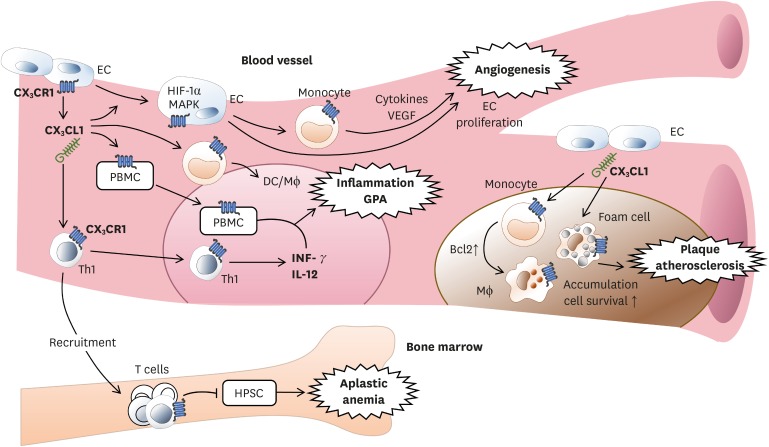Figure 2.
CX3CL1 from endothelial cell affects CX3CR1-expressing cells within blood vessels. For angiogenesis, monocytes expressing CX3CR1 promoted by CX3CL1 can secret cytokines and VEGF. This can lead to formation of extracellular matrix and vascular remodeling for angiogenesis. For inflammation, activation of CX3CR1 which is expressed in PBMCs causes leukocytes to migrate to the site of inflammation. CX3CR1-expressing Th1 also stimulates inflammation by secretion of IFN-γ and IL-12. For plaque, when CX3CL1 binds to CX3CR1 on monocyte, macrophage, and foam cells, these cells will accumulate in blood vessels and promote cell survival via expressing anti-apoptotic Bcl2 within cells. CX3CR1 is required for atherosclerosis. For aplastic anemia, autoreactive T cells expressing CX3CR1 are recruited into bone marrow by CX3CL1 to destroy HPSCs, resulting in aplastic anemia.
VEGF, vascular endothelial growth factor; PBMC, peripheral blood mononuclear cell; HPSC, hematopoietic stem cell; EC, endothelial cell; HIF, hypoxia-inducible factor; MAPK, mitogen-activated protein kinase; GPA, granulomatosis with polyangiitis.

